
We stopped feeding the birds sunflower seeds this spring after a chipmunk (or red squirrel) had an air-filter-and-hood-insulation feeding frenzy in our car. We hoped that the rodents that normally forage for sunflower seed debris under our feeders would move on down the road and, so far, it seems to be helping. We see very few squirrels now and our chipmunk population is down to two.

The goldfinches survey the garden but haven’t eaten the chard yet this year. Perhaps they did so last year to get moisture during the drought.
I dragged myself kicking and screaming into the decision to stop feeding the birds. George and I love watching the birds at our feeders. But now, several months later, I have found an unexpected boon to taking down the seed feeder. We seem to have a greater variety of birds in the yard now and an increase in the nesting population. It’s possible that I am simply more observant of bird behavior around the yard now that the bird feeder playground has been closed. But I think it is more than that and we actually have had a change in the resident bird dynamics.
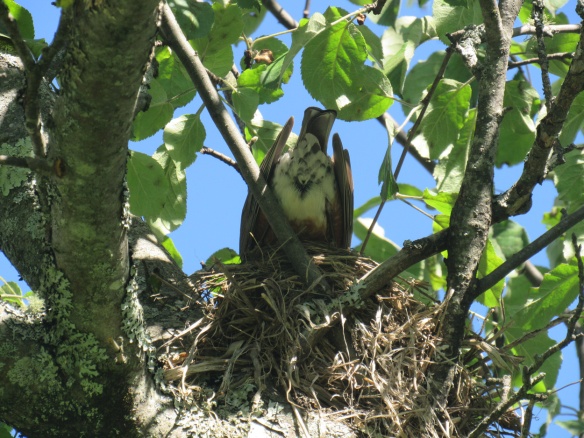
A robin nesting in an apple tree in the middle of our yard.
We still feed suet and added two more birdbaths, so continue to see most of the usual suspects. We see far fewer chickadees and cardinals, but now the more elusive warblers–which I usually hear but don’t see–have been putting in appearances in trees near the house. The biggest change, however, has been the increase in nesting couples.

Robin eggshells?
Aside from the bluebirds, swallows and wrens nesting in our boxes, I believe we have bluejays, robins (at least two pairs), mourning doves, catbirds, sparrows, nuthatches, and phoebes nesting in trees in and around our yard.

This past week, the late-nesting goldfinches and cedar waxwings have been gathering string and wool for their nests. I don’t know why we have become such a bird nursery this year. Perhaps there are less predators with our large fenced area and without the attraction of a feeder. In any case, I am glad that we took the feeders down.

Mourning dove nesting in the apple tree behind our compost bin. The male sits on it during the day and the female takes the night shift.
We were fortunate again this year to see the first flights of some of the swallow nestlings. They don’t fool around with little short flights to a neighboring tree. They carve a wide arc into the sky, trying out all the swooping, gliding, turning, fluttering swallow acrobatics in that first amazing flight. It’s looks like utter exhilaration in motion. Imagine how it must feel to go from a crowded nest box to dancing on the wind like that.




Getting ready for the first flight with a meal of dragonfly. The swallows are feeding constantly in the days before they leave the nest.
The increased bird population has not been without its problems. Our male bluebird became crazed after the birth of his brood and starting attacking our house windows with mind-numbing (his and ours) zealous hits–boom, flutter, boom. Over and over and over. It looked as if it would hurt, but he persisted–for hours–then days. We leaned a piece of plywood against his favorite window to cut down on the reflection.

But he simply moved to our vehicles’ side mirrors,




becoming so enraged at his reflection that he couldn’t contain his poop, leaving us with cascades of lovely fecal matter down both sides of the car and truck.

I finally had to cover the mirrors.

The babes have flown and I suspect he thinks he’s warding off competition for a second brood.

Our other bird issue was not unexpected. We had our first real crop of strawberries this year and as they started to ripen, it was apparent that something was eating them. I didn’t know if it was birds, chipmunks, or mice until I caught a cedar waxwing redhanded. We quickly cobbled together a funky netting system to cover them, which has worked beautifully. Except for the fact that I have to crawl around to pick the berries and weed.

The netting is hard to see but so far it has kept the birds out.
We also covered our brassicas this year with agribon fabric.

They were devastated by cabbage moth caterpillars last year. So far, the plants are thriving under the fabric. The agribon does raise the temperature, so may end up being too hot for the cool-loving brassicas.

We’ll see.


The wet weather last month may have contributed to the shoot blight we’re seeing on young poplars in the woods
Weatherwise, the past weeks have been perfect, with lots of gorgeous sun and warmth punctuated with afternoon and evening thunder storms.
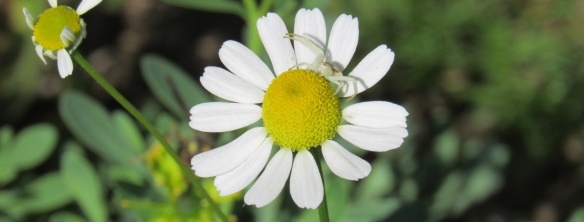
George put in a water line to the vegetable gardens, but we haven’t had to use it yet, there has been such a nice mix of sun and rain.

Trench for the water line.
The bees are thriving,

flowers blooming,



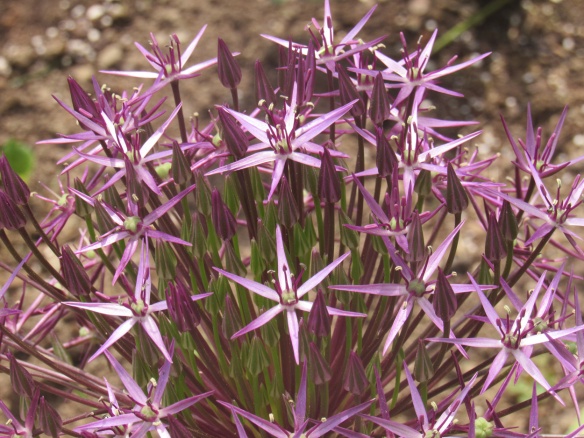


and the dogs are doing their doggy things.

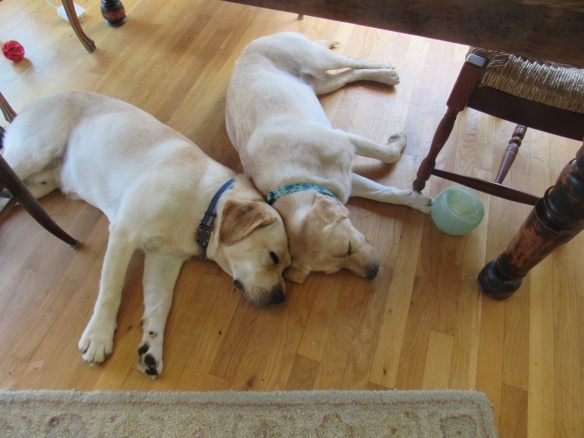
It’s been a good June.

First peach.
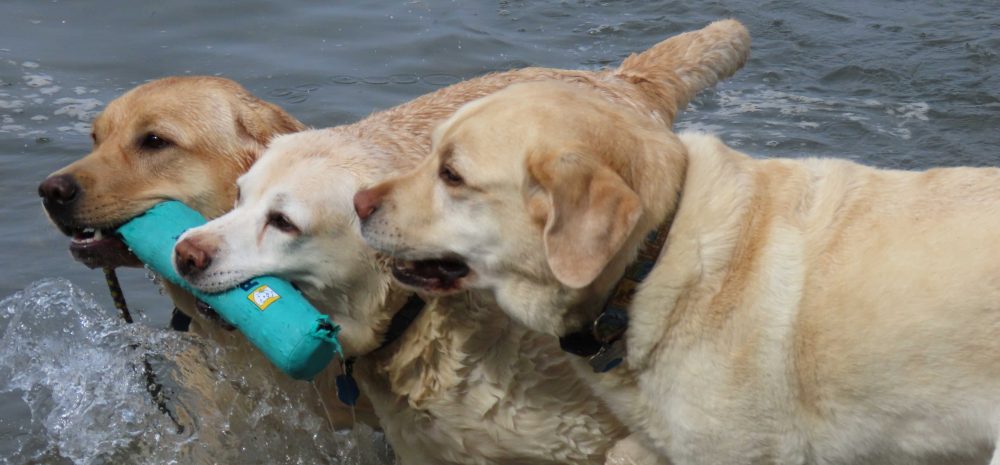
Tough decision about the birds. I’m not sure I would have been able to stop feeding the birds, but I certainly understand why you chose to stop. Lovely flowers! And, oh, those dog buddies! How they’ve connected. Looks like they have a very strong bond.
It was a tough decision. But we also are doing everything we can to cut down on ticks and the area under the feeder was full of them. It’s interesting that there are very few studies on how feeding birds affects the balance of species. Fascinating topic. As for the dogs, they make quite a pair. They have very different personalities but have become close buddies.
Yes, I have heard about birds and ticks. N-o-o-o! Sigh. On a happier note, love seeing those dog pictures.
The squirrels drive me mad and unfortunately when they’re here destroy more than the feeders. Last year we stopped feeding the birds about this time because we had a nest of predatory jays and the feeding station was turning into a target. As a result I missed seeing the woodpecker chicks but at least (I hope) it kept them safe.
It’s amazing how quickly the squirrels left once we stopped feeding the birds. I don’t miss them! Our birdfeeder was attracting pigeon hawks. We still have them and other hawks cruising for chicks, but it seems like they come by less often. I hope your woodpecker chicks made it.
That is the trouble with netting fruit but it has to be done if you want to eat any yourself. Lovely flowers.
I suspect I will have to net my haskaps next year too. So far, no birds have been tangled in the net. The peonies have been glorious this year.
Wonderful post. I love watching birds in the garden. Interesting how the dad attacked his reflection so relentlessly.
Thanks Peggy. We had nesting bluebirds last year without any of this behavior so we’re curious as to why he’s so aggressive. He is still going at it, but less frequently.
One year I had a whole flock of cedar waxwings descend on a hillside of wild strawberries and clean them out in a few minutes. But I didn’t mind sharing my wild strawberry bounty with them as much as I mind sharing it with the chipmunks, who often leave gloating little piles of hulls on the back stairs.
Do you know the name of that peachy-pink peony? It’s a beauty!
As we were putting up the net, a whole flock of waxwings was wheeling over us. I think we got it on just in time. Chipmunks do have a way of gloating. Fortunately our new fence and the dogs seem to be keeping them out of our gardens. I don’t know what kind of peony it is–perhaps Coral Charm or Coral & Gold. It changes color from pink to peach to coral . I love it.
It is a gorgeous day in your neighborhood. Beautiful flowers, creative covers and loving pups. I think you’re having a good summer so far. 🙂
It’s been a lovely summer. We are so lucky to have found this place.
Your bluebird gave me a good laugh. They can be insane. I don’t like to feed the birds except in deep snow or bad weather. But I do like seeing them come to feed, so it’s a hard decision. Your garden and flowers look beautiful! And I so enjoy seeing the dogs do doggy things. They have really become fast friends. Happy Fourth of July!
Happy Fourth to you! I have been intending to feed the birds again in winter, but might just continue to feed the suet. The gardens are thriving so far this year and the dogs are a constant delight.
A lovely June with lots of activity. I, too, have noticed more nesting birds in our yard. I think the migrants might have had a good winter and now with all the rain boosting plants and insects, a good breeding season. They need all the breaks they can get.
Lovely flowers – your coral pink peony is gorgeous!
It’s interesting that several folks have commented on an increase in nesting birds this year. I like your theory. The coral peony is very photogenic!
Your pictures are just wonderful. What patience you must have to capture such action-filled shots. Thank you for taking us into your world so that we could experience its challenges as well as beauty.
Thanks! I don’t have much photographic patience, actually. I just click away and hope that some come out okay. Last year was an exception, though. One of the swallow nesting boxes is quite close to our porch and I sat there for hours to get a video of a baby leaving for the first time. It turned out to be a not-very-exciting video–he just suddenly jumped–but it gave me a thrill.
I love your garden and love reading about your life. The problem I found with putting nets over our cherries last summer was that, while the birds didn’t eat the cherries, they also couldn’t get at the insects which were eating the cherries. I guess humans always have been and always will be in competition with other species for real food.
Thank you Kerri. A blog is more efficient than letter writing. Good point on the bird/insect balance. It’s a complicated puzzle.
I enjoyed your post…I’m always amazed at how many similarities there are in homes and gardens all over the world. You have an impressive range of birds nesting in your garden this year, we have also noticed many more birds in our garden since we increased our birdbaths. I am inspired to try brassicas again, we had such a hard time with white butterflies a few years ago, we gave up…but will give the netting a try this year. Lovely to see the flowers blooming and happy bees…and of course, happy dogs!
What I wouldn’t give for some of your colorful birds in our yard! One thing I love about blogging is getting a glimpse into the similarities (and differences) of our lives all over the world. I was about to give up on brassicas after last year and I’m still not sure how the agribon will work out in the long run. I’ll give updates.
A glorious post. We have also stopped feeding birds for similar reasons. In such a comparatively dry Spring, we have more birds visiting the water sources and, yes, I think we have more nests. All your photos are good, but I mostly admire the bird box ones, because I know how difficult it is to catch the moments that you have.
My mother was a birdwatcher and Audubon bird-bander, so we always fed birds when I was growing up and I’ve continued it through adulthood. It was hard to stop but now that I have, I wonder that I never thought about how feeding changes the small ecosystem of our yard. We are fortunate that the swallow box is near our porch, so I can sit comfortably in a rocking chair while taking the feeding photos. Those swallow chicks have given us hours of entertainment.
Looks like a very good June! Love the Maine peach and your beautiful flowers. The pups look happy!
It has been a very good June. I understand that Georgia’s peach crop got hit hard this spring. Maine seems to be an up-and-coming peach producer. That little tree had about 10 peaches on it, but I culled most of them because the tree is so young.
Even the local produce stands are low on peaches. Some of the local ones are from South Carolina. I hope you get to enjoy yours. My dad once had several peach trees and when the were ripe we just picked them off the tree to eat. We’d be covered in juice but those were the best peaches I ever put up n my mouth 🍑
You take the *best* photos, Brenda! Wow! The ones of the birds feeding and that foolish, self-harming bluebird are amazing but all of the shots are worth a second look. We can’t feed birds or encourage them to stay around because we have cats that go outside but I do love hearing about your sightings. A very fine June!
Thank you Kerry. Cats and birds do not mix well. Oddly enough, we have very few cats in our neighborhood. Rumor has it that they disappear right around the times we hear coyotes howling. I suspect the lack of cats contributes to our huge chipmunk population. Fortunately, the dogs co-exist well with birds and Alice chases the chipmunks out of her territory. Go Alice!
I’ve always wondered what was the evolutionary advantage to have blue egg shell.. these are really cute but wouldn’t make them more visible to predators? Is it really robin’s shell? I didn’t know that
I couldn’t help but laugh at the massive bird shit on your car, it was a good idea to cover the mirror! haha!
What an interesting question about egg coloring. I did a little research and one article that said that the blue coloring protects from UV radiation and also heats up the egg (which may or may not be a good thing). The bird shit was massive–and he managed to deposit it in a very short period of time. We took the covers off for a few days and then–he returned–aargh.
Oh that is interesting! I had no clue it could be related to UV radiation..!! Thanks for sharing your discoveries.. nature is so fascinating 🙂
Wow – what fabulous photos! You’re lucky to have so much wildlife around you, despite the hazards. That said, I do appreciate that things like squirrels can cause serious trouble – just spotted one feeding in our garden… So THAT’S what a blue bird looks like!? Never seen one – despite the claim that there will be bluebirds over the white cliffs of Dover, we don’t get them in the UK.
We are fortunate to have so much life around us. We live in a lovely place. Bluebirds are beautiful little things, but this one seemed to have gone off his hinges. Fortunately, he seems to have calmed down in the past few days. I hope he didn’t breed a whole crew of aggressive children to return next year. I always assumed that the bluebirds over Dover was a reference to both planes and birds. Didn’t know that there weren’t any bluebirds in England.
How interesting reading how the dynamics were affected when you stopped feeding the birds, especially an increase in diversity and nesting birds. I constantly try to cut down too as predators will snatch unwary birds but I feel obliged too when I release birds, I like to give them a good start. You do have some wonderful birds! Poor confused robin and poor truck and cart! We had a green finch do that one year, it was awfully difficult to watch as it went on for a week. How wonderful it must have been seeing those swallow chicks take to the air, they certainly own the skies. A beautiful peony, and awhhhh…look at those dogs. Bless them.xxx
I can understand that you would have to feed your new releases. It’s hard to know whether the increase in nesting birds this year is related to the taking down the bird feeder. But it sure has been fun watching (from a distance) the whole nesting process. Yesterday the two baby robins in the apple closest to the house left the nest. Not as exciting as the swallows–lots of awkward hopping from branch to branch. But I’m wishing them well. We’re having some hot weather so the dogs are enjoying their new treat–the sprinkler.
What a great post! I love the photos of the young swallow being fed by its parent. On the other hand, your bluebird could use some better manners – or maybe some bird meds! And it’s wonderful that you have so many birds nesting. We have Chickadees and Wrens in our boxes, and a Robin in the ‘Darlow’s Enigma’ climbing rose. There’s also an Oriole nest nearby – I think. I think about cutting off the bird feeding, but I’m not sure I could go through with it;
Those young swallows provide us hours of entertainment. It’s astounding how much the parents feed them in the last days before the fledglings leave the nest. It wears me out just to watch them but it keeps our insect and caterpillar population down. We had a respite from the male bluebird assaults but now a female appears to be making a nest in the swallow box and the male is getting aggressive again. I’m happy to hear that you found tenants for your beautiful boxes and I’m envious of the Oriole nest. We occasionally get a glimpse of an Oriole, but that’s it.
Wow that bluebird was crazed!! Your garden is amazing. Enjoyed my visit to your post!
The bluebirds seem to be nesting again and our crazed fellow continues to batter himself in a useless defense against his own reflection. I hate to think that he’s passing along his genes to two batches of similarly self-flagellating offspring, but I read that aggression may be a good trait for bluebirds. It’s pretty annoying from our end, though. I’m glad that you enjoyed the post–stop by any time. Your photography is exquisite and it was nice to see that you’ve been spending some time in Maine!
Thinking of heading up your way towards the end of the month – would you like to meet? Send me an email – elizawaters7.5acres@gmail.com
Yes! I will send you an email.